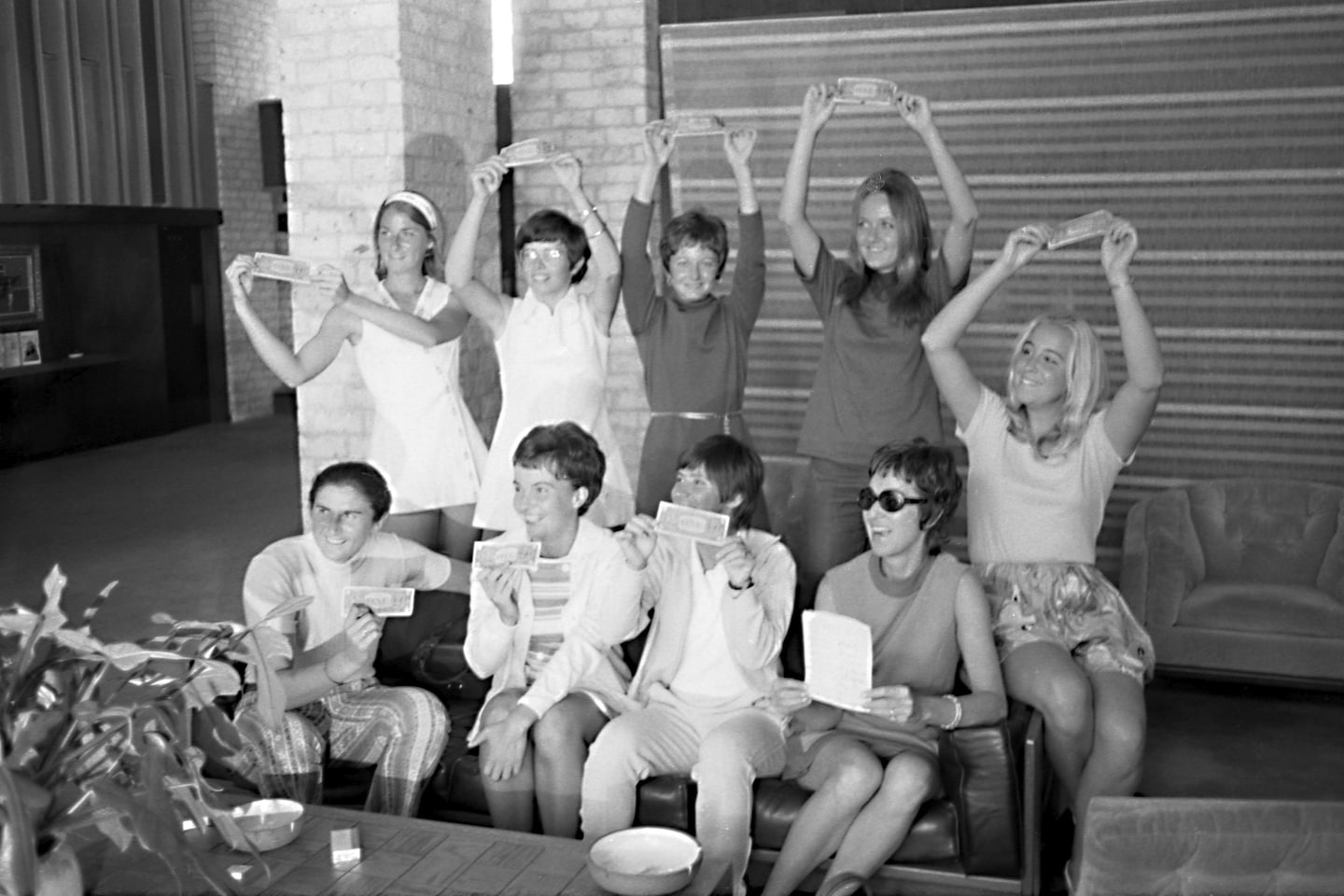This is a powerful moment for athletes creating change through sports

To highlight disparities in compensation, the publisher of World Tennis magazine, Gladys Heldman, organized a tournament in Houston independent of the U.S. Lawn Tennis Association (now the USTA). Seeking equal opportunity came with risks. The USLTA threatened to suspend Americans who competed. Grand Slam tournaments threatened sanctions. The two Australians among our “Original Nine” were suspended from their national federation shortly after we signed $1 contracts to play in the tournament.
We drew our line in the sand, and in just a few months, with Heldman’s help and corporate backing, this single tournament led to the creation of a new tour, the Virginia Slims Circuit. In 1973, the Women’s Tennis Association was formed, giving female players one unified voice.
We didn’t want to simply talk about equality and opportunity; we made it happen.
For audiences and those of us who have been at the forefront of creating change through sports for many years, this is a powerful moment.
The conversations raised by today’s sports stars are rooted in a history of dedicated, but much more isolated, activism. Decades ago Muhammad Ali, Bill Russell, John Carlos and Tommie Smith raised their voices (and in some instances, their fists) to bring attention to racism in our country and beyond. Kathrine Switzer’s participation in the Boston Marathon broadened discussion of gender equality.
During my professional career, athletes endured incredible pressure to measure our words and actions to avoid upsetting sponsors, affecting tours or otherwise rocking the boat. I often felt I was alone and walking a tightrope. How we delivered our message required enormous care.
In tennis, we Original Nine risked our careers and our ability to make a living doing what we loved. We knew that we were standing up for not only ourselves but also those who would come after us.
Sports are a microcosm of society. Sports give athletes a platform to use their voice for positive change — in our fields and across humanity.
Today’s athletes are living experiences many from my generation dreamed of. The path to this point has not been easy, and there is still work to be done.
More than 30 years after the U.S. Open agreed to pay male and female champions equally, Venus Williams had to ask for the same treatment at Wimbledon. Today, the U.S. women’s soccer team is still seeking equal pay.
Today’s athletes are raising their voices about Black Lives Matter, voting rights, equal pay, climate change and more, all while living (and playing) with the threat from covid-19. They face many challenges familiar to activist athletes of my generation: enduring criticism and risking their careers. They also have more tools at their disposal and partners standing with them. Increasingly, major sponsors and brands support their efforts. Technology and money have opened doors, allowing athletes to communicate directly with fans and followers — and mobilize.
Making a difference in the lives of others is not easy. Each generation works for themselves and those who follow. It is significant that not just individuals but teams and leagues are sending messages.
It helps that younger generations, millennials and Generation Z, are embracing diversity and inclusion. Their willingness to show up, stand up and speak up helps create space for engagement from all of us.
Our Original Nine were on a group call when news broke that Justice Ruth Bader Ginsburg had passed. All of us who believe in equality, justice and freedom would benefit from following her guidance as we advocate ideals that she, too, championed: “Fight for the things you care about, but do it in a way that will lead others to join you.”
We’re not done yet — in or outside of sports. Although it might be easier for athletes to speak up, that doesn’t mean it is easy. We should listen as this and future generations speak out. They are taking action and becoming part of the solution.
Read more:






